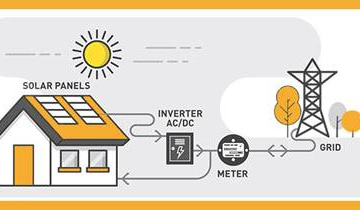DLMS and COSEM is an intelligent metering protocol used for the utilities such as electricity, gas, water, heat, etc. In this post, I am writing here about the process of smart energy metering, control, and management using DLMS/COSEM protocol and the significance of the OBIS code with an example.
Abbreviations:
- DLMS – Device Language Message Specification
- COSEM – Companion Specification for Energy Metering
- OBIS – Object Identification System
The DLMS / COSEM standard suite (IEC 62056 / EN 13757- 1) is the most widely accepted international utility meter data exchange standard.
DLMS is the application layer protocol that transforms the data into messages and COSEM describes the general object model and can be used for all kinds of presentations.

The DLMS / COSEM standard suite has been developed based on two strong and proven concepts which allow covering the widest possible range of applications and communication media:
- Object modeling of Application Data.
- Open Systems Interconnection (OSI) Model.
COSEM object definitions specify valid combinations of interface classes, OBIS codes, and data types allowed.
The OBIS codes are the Logical Names of the COSEM objects, i.e. the instances of COSEM interface classes. The combination of the interface class_id and the OBIS code always uniquely identifies each and every object within the server.
It is a 6-byte number that uniquely identifies an object in a logical device.
OBIS codes identify data items used in energy metering equipment, in a hierarchical structure using six values of group A to group F.
Group A: Specifies the medium (0= Abstract Objects, 1=Electricity, 7=gas, Etc.)
Group B: Specifies the channel.
Group C: Specifies the Physical Value (Current, Voltage, Energy, Etc.).
Group D: Identifies types, or the result of the processing of physical quantities identified by values in value groups A and C, according to various specific algorithms.
Group E: Identifies further processing or classification of quantities identified by values in value groups A to D.
Group F: Identifies historical values of data, identified by values in value groups A to E, according to different billing periods. Where this is not relevant, this value group can be used for further classification.
Example: Total Active Power of a 3-phase smart meter is always available on the address 1.0.1.7.0.255 if the meter is DLMS compliant.
1.0.1.7.0.255 is an OBIS Code of Total Active Power.
1.0.3.7.0.255 is an OBIS Code of Total Reactive Power.
1.0.9.7.0.255 is an OBIS Code of Total Apparent Power.

Now check the mapping of the logical name (OBIS code) and the given parameter (3-Phase Total Active Power) as below:

A list of standard OBIS codes and COSEM objects is regularly maintained by DLMS UA.
Note: This is my personal experience and learning to understand OBIS code.
Thanks for reading. Hope it will add some value to your learning. Cheers!!
To know more about the author, please visit his LinkedIn profile.
Go to home page for more information regarding communication protocols and other detailed blog on the future of the data center.



0 Comments